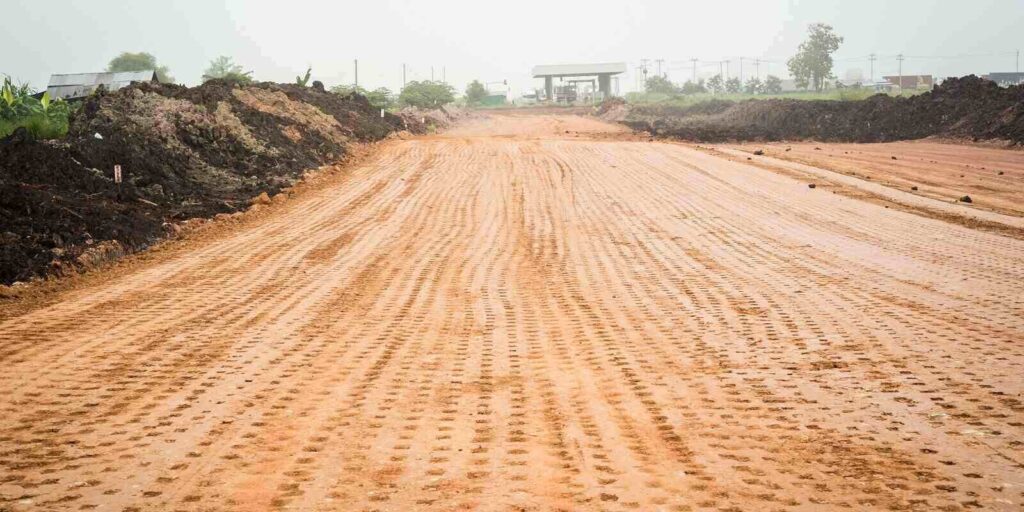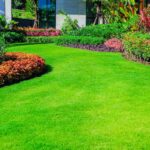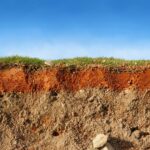Compacted soil can be a significant problem for gardeners and landscapers, as it hinders root growth, water infiltration, and nutrient uptake, leading to poor plant health. Fortunately, there are effective strategies to alleviate soil compaction and restore your soil’s health. Here’s a step-by-step guide on how to fix compacted soil.
Understanding Soil Compaction
Soil compaction occurs when soil particles are pressed together, reducing the pore space between them. This can happen due to heavy machinery, foot traffic, or even heavy rains. Compacted soil is denser, with fewer air pockets, making it difficult for roots to penetrate and for water and nutrients to move through the soil.
Steps to Fix Compacted Soil
Assess the Soil
Before you begin, assess the extent of soil compaction. You can do this by:
Visual Inspection: Look for signs like water pooling on the surface, stunted plant growth, and hard, crusty soil.
Penetrometer Test: Use a soil penetrometer to measure soil compaction. A reading above 300 psi indicates severe compaction.
Reduce Traffic and Pressure
Minimize the use of heavy machinery and reduce foot traffic in the affected area. Create designated pathways to avoid repeated compaction in the same spots.
Aerate the Soil
Aeration is a crucial step in alleviating compaction. There are different methods to aerate the soil:
Manual Aeration: Use a garden fork or a manual aerator to poke holes into the soil, allowing air, water, and nutrients to penetrate.
Mechanical Aeration: For larger areas, consider renting a mechanical aerator, which pulls out small cores of soil, leaving holes that improve aeration.
Incorporate Organic Matter
Adding organic matter improves soil structure by increasing its porosity and water-holding capacity. Use the following materials:
Compost: Spread a layer of compost over the compacted soil and work it in with a garden fork or tiller.
Mulch: Apply organic mulch, such as straw, wood chips, or leaves, to the soil surface. As it decomposes, it will add organic matter to the soil.
Cover Crops: Plant cover crops like clover, radish, or rye. Their roots help break up compacted soil and add organic matter when they decompose.
Amend the Soil
Certain soil amendments can help alleviate compaction:
Gypsum: Applying gypsum can help improve soil structure, particularly in clay soils. It helps break up heavy clays and improves water infiltration.
Sand: In some cases, adding sand can improve soil drainage. However, this should be done carefully, as adding too much sand can create concrete-like conditions.
Improve Drainage
Poor drainage often accompanies soil compaction. Ensure proper drainage by:
Installing Drainage Systems: Consider installing French drains or other drainage systems to redirect excess water.
Creating Swales: Swales are shallow channels that help manage water runoff and improve infiltration.
Regular Maintenance
Prevent future compaction by maintaining healthy soil practices:
Avoid Overwatering: Overwatering can contribute to soil compaction. Water your plants only when necessary and use drip irrigation to minimize soil disturbance.
Rotate Crops: In gardens, practice crop rotation to avoid depleting the soil and reducing compaction in specific areas.
Use Raised Beds: For smaller areas, consider using raised beds, which reduce soil compaction and improve root growth.
Fixing compacted soil requires a combination of immediate interventions and long-term maintenance. By assessing the extent of compaction, aerating the soil, incorporating organic matter, and improving drainage, you can restore your soil’s health and ensure your plants thrive. Regular maintenance and mindful practices will help prevent future compaction, leading to a more productive and sustainable garden.
Additional Tips and Techniques
Beyond the primary steps outlined above, there are additional techniques and tips that can further aid in fixing compacted soil and promoting long-term soil health.
Use Earthworms and Beneficial Microorganisms
Earthworms and beneficial microorganisms play a crucial role in maintaining healthy soil structure. Here’s how you can encourage their presence:
Vermicomposting: Add vermicompost (compost produced by earthworms) to your soil. It enhances soil aeration and nutrient availability.
Encourage Earthworm Activity: Provide organic matter such as compost, mulch, and green manures to attract earthworms to your garden.
Inoculate with Microbes: Use microbial inoculants, which are products containing beneficial bacteria and fungi, to improve soil structure and fertility.
Implement No-Till Gardening
No-till gardening reduces soil disturbance, maintaining soil structure and promoting a healthy ecosystem:
Mulching: Keep the soil covered with mulch to protect it from compaction caused by rain and foot traffic.
Cover Crops: Grow cover crops to protect the soil surface and improve organic matter content.
Permanent Beds: Establish permanent garden beds and pathways to minimize soil disturbance and compaction.
Use Appropriate Plant Species
Some plant species are particularly effective at breaking up compacted soil with their deep, robust root systems:
Taproot Plants: Plants like daikon radish, comfrey, and chicory have deep taproots that can penetrate and break up compacted soil layers.
Perennial Grasses: Grasses with extensive root systems, such as switchgrass and prairie grasses, can help improve soil structure over time.
Soil Testing and Amendments
Regular soil testing can help you understand your soil’s nutrient profile and structure, allowing you to make informed decisions about amendments:
Soil Testing Kits: Use soil testing kits or send samples to a laboratory to determine soil pH, nutrient levels, and organic matter content.
Targeted Amendments: Based on the soil test results, apply amendments such as lime (to raise pH) or sulfur (to lower pH), and add necessary nutrients to address deficiencies.
Water Management
Proper water management is crucial for preventing and alleviating soil compaction:
Irrigation Systems: Use efficient irrigation systems, such as drip or soaker hoses, to deliver water directly to the plant roots without compacting the soil surface.
Rainwater Harvesting: Collect and use rainwater for irrigation, reducing the need for heavy watering that can lead to compaction.
Long-Term Soil Health Strategies
To maintain healthy, non-compacted soil over the long term, consider adopting these sustainable practices:
Rotate Crops and Plant Diversely
Crop rotation and planting diverse species help maintain soil structure and reduce pest and disease pressures:
Rotate Crops: Avoid planting the same crop in the same spot year after year. Rotate crops to different areas of your garden to prevent soil depletion and compaction.
Diverse Plantings: Plant a variety of species, including cover crops and perennials, to promote a healthy soil ecosystem and reduce the risk of compaction.
Organic Mulches and Composting
Continuously adding organic matter to your soil can help maintain its structure and fertility:
Regular Mulching: Apply organic mulch to your garden beds annually to protect the soil and add organic matter as it decomposes.
Composting: Maintain a compost pile and regularly add finished compost to your garden to improve soil structure and nutrient content.
Monitor Soil Health
Regular monitoring of your soil’s health will help you catch and address compaction issues early:
Visual Inspections: Periodically check your soil for signs of compaction, such as poor drainage, hard crusts, and stunted plant growth.
Soil Testing: Conduct soil tests every few years to monitor changes in soil structure, pH, and nutrient levels.
Fixing compacted soil is an ongoing process that requires a combination of immediate interventions and long-term sustainable practices. By understanding the causes of soil compaction and implementing strategies like aeration, organic matter incorporation, proper water management, and the use of beneficial plants and organisms, you can significantly improve your soil’s health. Regular monitoring and maintenance will ensure your soil remains fertile, well-structured, and capable of supporting robust plant growth for years to come.






